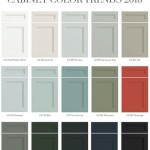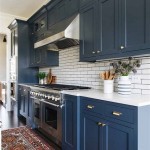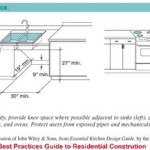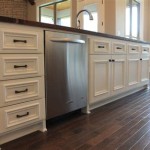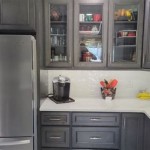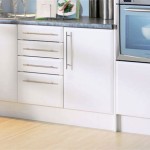How Much Do Kitchen Cabinets Cost in Malaysia? A Comprehensive Guide
Embarking on a kitchen renovation in Malaysia often begins with the pivotal question: how much will the cabinets cost? Kitchen cabinets are a significant investment, influencing both the functionality and aesthetic appeal of the space. Understanding the factors that contribute to the overall price is crucial for budgeting and making informed decisions. This article provides a detailed overview of the costs associated with kitchen cabinets in Malaysia, exploring the various aspects that impact the final price tag.
The price of kitchen cabinets in Malaysia can vary widely, ranging from a few thousand Ringgit for basic, ready-made options to tens of thousands for fully custom-designed and installed solutions. The final cost is influenced by several key factors, including the size of the kitchen, the materials used, the complexity of the design, the level of customization, and the chosen installer.
Key Factors Influencing Kitchen Cabinet Costs in Malaysia
Several factors collectively determine the overall cost of kitchen cabinets in Malaysia. Understanding these elements allows homeowners to accurately assess their needs and budget accordingly.
1. Materials: The choice of materials directly impacts the price. Common materials include:
a. Melamine Faced Chipboard (MFC): This is one of the most affordable options. MFC consists of a chipboard core with a decorative melamine surface. It is available in a variety of colors and finishes, offering a budget-friendly solution for homeowners.
b. Medium Density Fiberboard (MDF): MDF is a denser and more durable alternative to MFC. It is made from wood fibers compressed with resin and is often used for painted or wrapped cabinets due to its smooth surface. MDF is slightly more expensive than MFC.
c. Plywood: Plywood is a strong and stable material made from layers of wood veneer glued together. It is more resistant to moisture than MFC and MDF, making it a suitable choice for areas prone to humidity. Plywood is generally more expensive than MFC and MDF.
d. Solid Wood: Solid wood is the most premium material and offers the most aesthetic appeal and durability. Options like rubberwood, oak, and teak are commonly used. Solid wood cabinets are the most expensive option and require proper maintenance to prevent warping and cracking.
e. Laminates: Laminates are often applied to MDF or plywood cores to provide a durable and aesthetically pleasing finish. High-pressure laminates (HPL) are more resistant to scratches and heat than low-pressure laminates (LPL) and therefore generally cost more. Laminate selection can impact the cabinet's overall aesthetic and durability, reflecting the price directly.
2. Size and Configuration: The size of the kitchen directly correlates with the amount of cabinetry required. Larger kitchens necessitate more cabinets, increasing the overall cost. The configuration of the cabinets, including the number of upper cabinets, lower cabinets, drawers, and specialty units (e.g., corner cabinets, pantry cabinets), also affects the price.
3. Design Complexity and Customization: A simple, straightforward cabinet design is generally less expensive than a complex, highly customized design. Intricate details, specialized hardware, and custom dimensions all add to the cost. Opting for custom-built cabinets allows for greater flexibility in design and functionality, but it also comes with a higher price tag compared to ready-made or semi-custom options.
4. Hardware and Accessories: The choice of hardware, such as handles, knobs, hinges, and drawer slides, can significantly impact the overall cost. High-quality hardware made from durable materials like stainless steel or brass will be more expensive than basic options. Accessories like pull-out shelves, spice racks, and soft-close mechanisms also add to the cost but can enhance the functionality and convenience of the kitchen.
5. Installation Costs: Professional installation is generally recommended to ensure proper alignment, secure mounting, and a flawless finish. Installation costs typically range from 10% to 20% of the total cabinet cost, depending on the complexity of the installation and the installer's rates. Factors such as leveling uneven floors, modifying existing plumbing or electrical wiring, and installing backsplashes can also increase installation costs.
Estimating the Cost of Kitchen Cabinets Based on Material
While the overall cost is influenced by several factors, material choice often acts as a strong indicator. A rough estimate based on material selection can provide a starting point for budgeting.
1. Budget-Friendly Options (MFC and basic laminates): For a small to medium-sized kitchen (approximately 10-15 linear feet of cabinetry), homeowners can expect to spend between RM3,000 and RM8,000. This price range typically includes basic MFC cabinets with standard laminate finishes and minimal customization.
2. Mid-Range Options (MDF, plywood with mid-range laminates): For the same size kitchen, using MDF or plywood with higher-quality laminate finishes can range from RM8,000 to RM15,000. This price range allows for more design flexibility and the inclusion of some upgraded hardware and accessories.
3. Premium Options (Solid Wood, High-Pressure Laminates): Solid wood cabinets or cabinets with high-pressure laminates can cost upwards of RM15,000 for a small to medium-sized kitchen and can easily exceed RM30,000 for larger kitchens with extensive customization. This price range provides the highest level of durability, aesthetic appeal, and customization options.
It is essential to remember these are just estimates. Obtaining quotes from multiple suppliers and installers is crucial for getting an accurate assessment of the cost for a specific kitchen project.
Hidden Costs to Consider When Budgeting for Kitchen Cabinets
Beyond the base price of the cabinets and installation, several hidden costs can significantly impact the overall budget. It is crucial to account for these potential expenses to avoid unexpected financial strain during the renovation process.
1. Demolition and Removal of Existing Cabinets: If the renovation involves replacing existing cabinets, the cost of demolition and removal must be factored in. This may involve hiring a contractor to safely remove the old cabinets and dispose of them properly. The cost can vary depending on the size and complexity of the removal process.
2. Plumbing and Electrical Modifications: Installing new cabinets may require modifications to existing plumbing or electrical wiring. For example, relocating a sink or adding new outlets for appliances can incur additional costs. It is important to consult with a qualified plumber and electrician to assess the necessary modifications and obtain accurate cost estimates.
3. Backsplash and Countertop Installation: While not directly part of the cabinet cost, the backsplash and countertop are essential components of a kitchen renovation. The choice of materials for these elements can significantly impact the overall budget. Options range from affordable ceramic tiles to premium granite or quartz, each with varying installation costs.
4. Lighting: Adequate lighting is crucial for both functionality and aesthetics in the kitchen. Installing under-cabinet lighting, recessed lighting, or pendant lights can enhance the overall ambiance and improve visibility. The cost of lighting fixtures and installation should be included in the overall budget.
5. Unexpected Repairs: During the renovation process, unforeseen issues may arise, such as damaged drywall, hidden plumbing leaks, or structural problems. It is prudent to allocate a contingency fund to cover unexpected repairs and prevent delays in the project.
6. Delivery Fees: The cost of delivering the cabinets to the location should be taken into account, particularly if the supplier is located far away. Delivery fees can vary depending on distance, size and weight of the shipment, and the carrier used.
7. Permit Fees: Depending on the extent of the renovation, a building permit may be required. Permit fees vary depending on the local authorities and the scope of the work being done. It is important to research the local regulations and obtain the necessary permits before starting the renovation to avoid potential fines.
By carefully considering these hidden costs and obtaining detailed quotes from multiple contractors and suppliers, homeowners can create a realistic budget for their kitchen cabinet project in Malaysia and avoid unexpected financial surprises.

Kitchen Renovation Estimator Recommend My

Accurate Rate For 4 Types Of Kitchen Cabinet Malaysia

Aluminium Kitchen Cabinet Malaysia Known Extraordinary Resistance Against Big Plus Cabinets Door Frame Profiles Available Full Fully

How To Save Money On Your Kitchen Renovation Recommend My

Promotion Package Selangor Malaysia Kuala Lumpur Kl Shah Alam Subang Jaya Supplier Manufacturer Supply Supplies Chan Kitchen Furniture Sdn Bhd

Kitchen Cabinets Malaysia Eliminate Various Kinds Problems Homemakers Custom Made Cabinet Designs Table Top Quartz Stone Aluminium Stainless Steel Dish Rack 7th On Invaber 10
Kitchen Cabinet Cost In Malaysia 2024 Factors Range And Budgeting Tips

How To Save Money On Your Kitchen Renovation Recommend My

Custom Made Solid Wood Kitchen Cabinet Malaysia Supplier Makers

Kitchen Cabinet Manufacturer Malaysia Top Supplier
Related Posts

